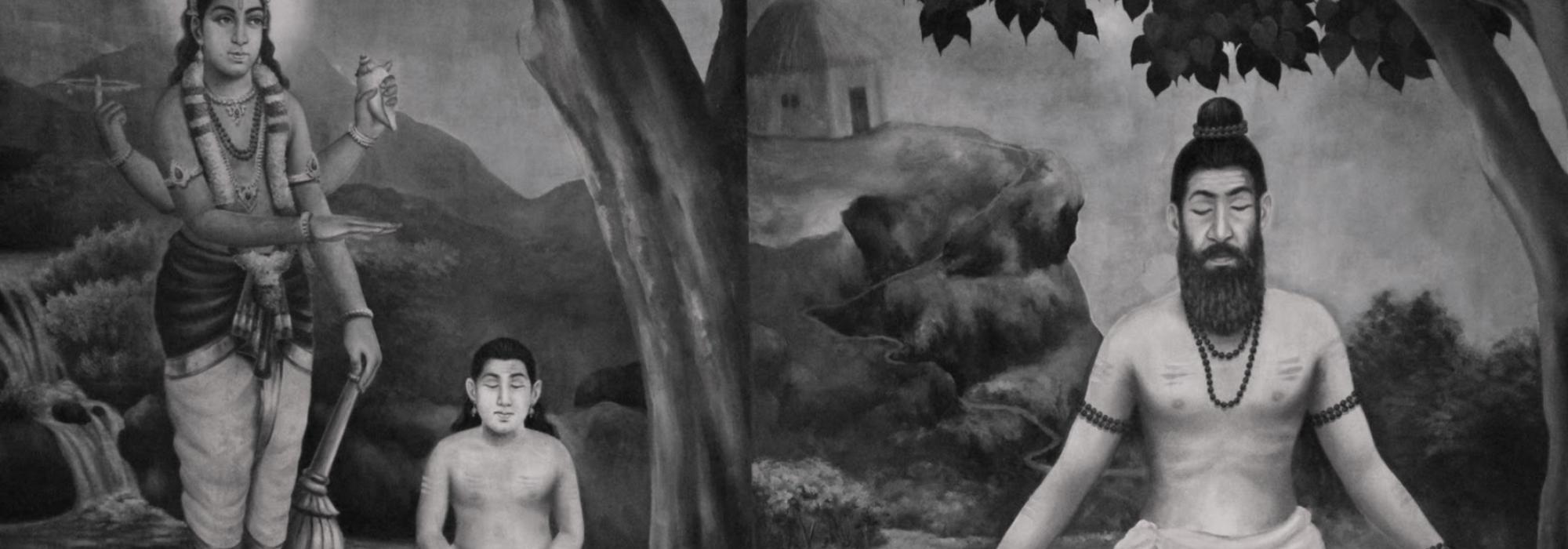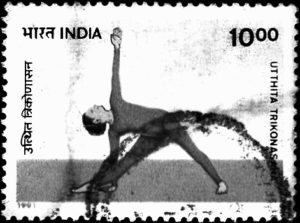There is much discussion, debate, and even controversy about yoga these days. But what is yoga? First of all, it is far more nuanced than the typical image of a young lady sitting cross-legged, eyes closed, deep in meditation with a benign smile on her face.
Yoga is a Sanskrit word that means ‘union.’ It simply means joining two things. For example, Rigveda Samhita 7.67.8 uses the word ‘yoga’ when it refers to the yoking of the horses to the chariot.
The word yoga comes from the root word ‘yuj’ which means ‘connection.’ This connection is not just at a material level. What heightens yoga from a mere word to a spiritual discipline is the understanding of the word at a deeper level – the interconnectedness of everything in the universe. In other words, the purging of dichotomies is yoga. Bringing together body and mind, head and heart, ambition and satisfaction, or divine and human is yoga.
Yoga is also a school of Indian philosophy, propagated by the great seer-sage Pantanjali in his work, the Yoga Sutras.
Therefore, it is beneficial to recognize that yoga as a word is different from yoga, the spiritual discipline is different from Yoga, the school of philosophy – although they are related.
In today’s world, the physical aspect of the ancient spiritual discipline of yoga is often used as a quick-fix solution to achieve the elusive work-life balance. But let’s see what Krishna says in the Bhagavad-Gita about yoga: “Indeed yoga is not for one who eats too much or too little. It is also not for one who sleeps too much or stays awake for too long. Whereas, yoga destroys all sorrows for one who takes the right measure of food, is moderate in sleep and in staying awake, works in a disciplined manner, and enjoys moments of recreation.” (6.16-17)
Now this is confusing! If Krishna is to be believed, yoga is effective only after you have achieved work-life balance. But why is it that people around us who regularly do yoga, pranayama, or meditation seem to be calmer and more balanced? They seem to have hit upon this magic formula called yoga, and mental peace seems to be at their beck and call. If only we had those extra twenty minutes to try that meditation technique or join those yoga classes in the neighbourhood.
This notion falls under the cognitive bias known as ‘the swimmer’s body illusion.’ (Of course, this is just a special case of ‘correlation is not causation’). According to this, we assume that an athlete’s body is muscular and strong because of her years of training. In fact, it is quite the opposite. She became an athlete precisely because of her naturally muscular and strong body, which only got better with the years of practice.
If a quick run-through of yogic postures or a meditation technique solved all our problems, then we would have more yogis around us than we could handle. One can do all the meditation he wants and yet be agitated (sometimes because he didn’t find the time to meditate).
This is why the Yoga Sutras clearly lay out an eightfold path for those who care to learn yoga. The very first step – Yama – consists of following a few precepts like compassion, integrity, and keeping away from lust and greed. This creates the right mental attitude to start off with the next step – Niyama – that includes rules like cleanliness, contentment, and devotion. Only then do we enter the third step – Asana – which comprises various exercises to energize the body. The fourth step – Pranayama – deals with various techniques of breathing. The fifth step – Pratyahara – deals with controlling the sense organs and mastering desires. We are already deep into the inner journey as we go to the sixth step – Dharana – which comprises concentration and the focussing of our cognitive energies towards one object. Only after assiduous practice of this single-minded focus can we move to the seventh step – Dhyana – which refers to meditation. Then we go to the final step – Samadhi – which is the perfectly balanced state. This is true ‘yoga’ – union of the individual with the whole of creation.
Now this is not just confusing but also scary! The first step itself is so difficult to attain, so how can one go through this detailed eight-step process? In fact, Arjuna harbours a similar doubt in the Gita: “The mind is restless, Krishna. It is turbulent, powerful, and unyielding! Controlling the mind seems as difficult as controlling the wind.” (6.34)
Krishna replies: “Without doubt, O mighty one, the mind is restless and tough to restrain. But the mind can be controlled by practice and by detachment.” (6.35)
Arjuna persists. “What happens to him who is sincere but lacks self-control, when he strays from the right path and fails to attain perfection in yoga?” (6.37)
Krishna comforts him. “One who strives to do good never ends up in misery. Whether in this world or beyond, he never perishes, my son.” (6.40)
In sum, it’s great to see the enthusiasm around yoga and so many people attracted to this ancient discipline but one should be wary of thinking of it as an instant remedy to attain peace. While the popular aspects of yoga like asana and pranayama indeed play a role in invigorating the body and reducing stress, they will be short-lived unless we attain the right mindset to deal with the trials and tribulations of daily life.
That said, let Krishna’s comforting words stay with you as you move ahead in life. As long as you sincerely strive for that balance, you will attain it at some point. As long as you stay away from extremes, you always have a good shot at the centre, which is where you will find yoga.
References
Iyengar, B K S. Light on Yoga. London: George Allen & Unwin, 1966
Sreekrishna, Koti and Ravikumar, Hari. The New Bhagavad-Gita. Mason: W.I.S.E. Words, 2011
This article was first published in Daily O as part of my column Commonsense Karma.
















































